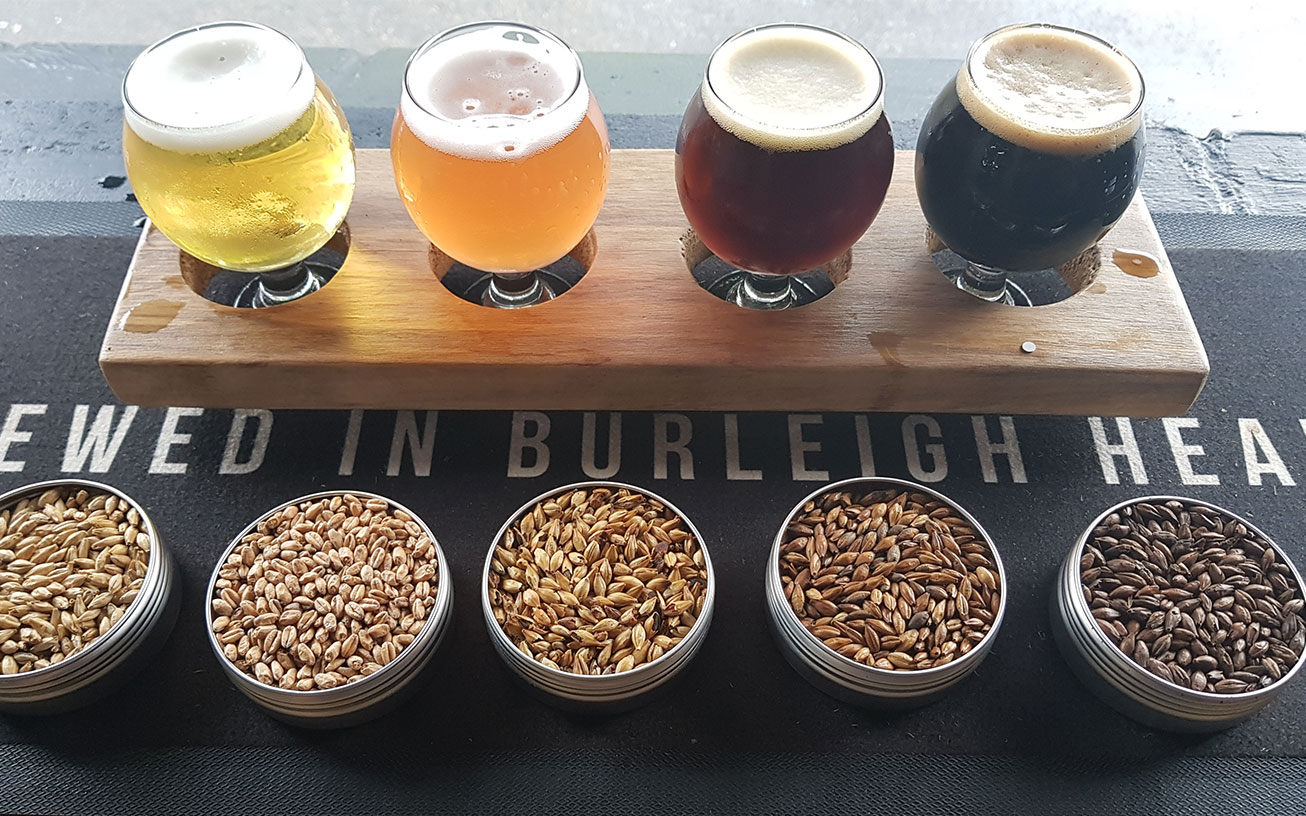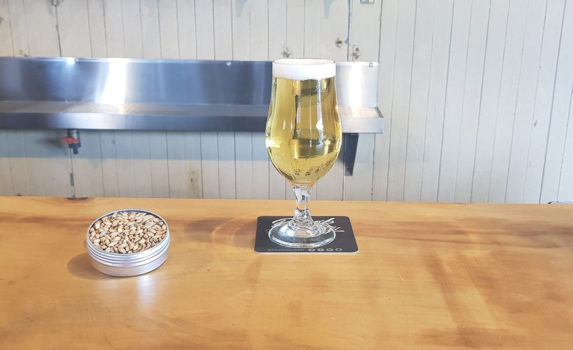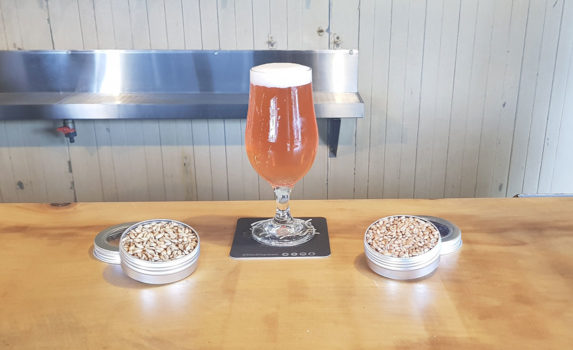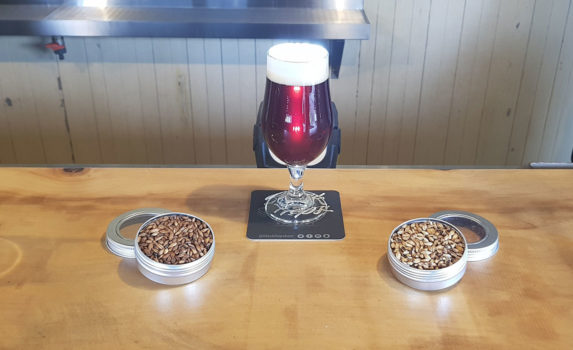A question we sometimes get asked is, what makes beer look like beer? Specifically, what makes some beers clear and pale amber in colour, compared to others that are cloudy caramel or jet black. The answer to what defines beer colour can largely be summed up in one word – malt!
Just like coffee beans are roasted to make coffee, barley and wheat go through a process called malting before the beer is brewed. This is a chemical reaction to convert the starch in the grain into sugar. Following this forced germination, the green malt is roasted in a kiln to the desired colour and specification to create a range of different types of malt, ranging from light through to very dark. Using light malts in the brewing process generally results in beers of a pale hue, while the darker the malt, the darker the beer – hello stout!
There are many units used to measure colour; EBC, lovibond and SRM being the most common in the beer world. At Black Hops, we tend to stick with EBC, or European Brewing Convention. The higher the EBC, the darker in colour the beer will be.
At Black Hops each of our beers have their own unique flavour and colour. We’ve gone into what makes beer taste great in a previous blog post. So let’s have a look at a few of our beers, and get into the specifics of what gives them their unique colour when we brew them.
Lay Day Tropical Lager
- 6 EBC
- 70% Pilsner Malt, 10% Pale Wheat, 5% each of Rolled Oats, Rolled Barley, Rolled Wheat & Acidulated Malt
- This beer is brewed with relatively light malts and is therefore very pale in colour, which allows us to showcase the delicacy of the style and bring forward the tropical notes of the new world hops.
Pink Mist (raspberry saison)
- 10 EBC
- 70% Pilsner Malt, 30% Pale Wheat, Fresh Raspberries
- A simple malt bill of pilsner and wheat is very typical of the saison style. The pink colour is achieved through the use of fresh raspberries and a traditional french yeast strain that stays in suspension, giving the beer a cloudy appearance.
Code Red (Red IPA)
- 40 EBC
- 80% Pale Malt, 6% Med Crystal, 6% Dark Crystal, 4% Black Malt, 4% Rolled Oats
- Achieving this dark, ruby red colour is quite a challenge, too light and it will appear brown, too dark and it will be black. A lot of effort went into getting this recipe just right. The crystal malts give it a rich caramel flavour and colour and the small addition of black malt imparts just enough colour to achieve the signature ‘Code Red’ red. A vigorous boil also helps to bring out more colour from the malt sugars.
Eggnog Stout
- 80 EBC
- 70% Maris Otter, 15% Flaked Barley, 5% of each Roast, Chocolate, Black Barley.
- Brewing stouts and dark beers are all about the dark roasted barley. In our Eggnog Stout we use a blend of 3 malts to impart the colour, which also delivers some complexity to the flavour. At 80 EBC, this beer is just about as dark as you can perceive.
Other factors that influence the colour of beer
While malt is the main factor that influences colour in beer, there are a few other factors that can also play a part.
Beers can get various shades of ‘haze’ as a result of the chilling process. Particles of yeast suspended in the liquid can cause the cloudy, with sediments, type effect of a typical wheat beer. Whereas clear, crisp beers go through a specific filtering process either to suit the style or to assist with shelf life stability.
Filtering not only removes the yeast and hop particles but also strips some of the colour from the beer. At Black Hops, we typically serve all our beers unfiltered. We do partially filter some of our beers to achieve our desired clarity, but we don’t remove all of the yeast/hops, so you will notice there is always a level of haze to our beer. We believe this gives the beer more flavour and body, but does mean the final product still has a live yeast culture and as such should be drunk fresh to get all the benefits from it.
Other influencers include: any adjuncts used, the type and quantity of hops, water chemistry, ageing, boil times, oxidation and clarity.
Let us know your thoughts
We hope this has given you a bit of an insight into what makes our beers looks the way they do. If you have any feedback, we’d love to hear from you.




